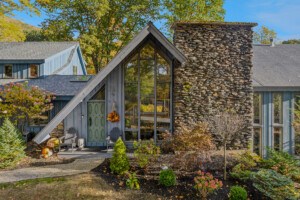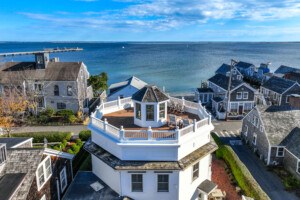This Aging Roxbury Victorian Will Become a Home for Minority Women Pursuing STEM
The [G]Code House aims to combat gentrification, invest in youth, and empower women in one fell swoop.
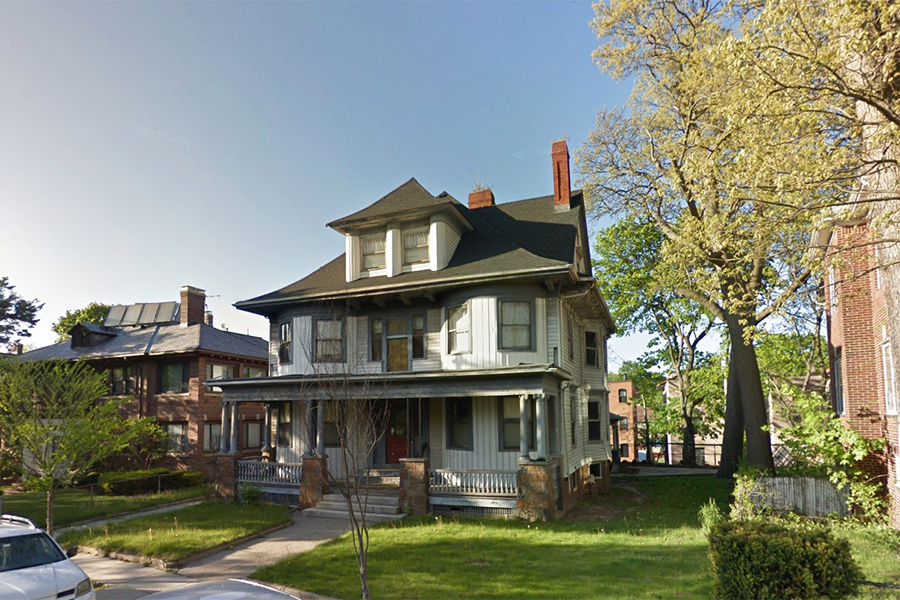
The [G]Code House in progress / Photo courtesy of Sasaki
Bridgette Wallace and Carolle Nau co-founded startup incubator SkyLab in 2011, with the goal of creating entrepreneurial opportunities for Roxbury residents. But Nau, who grew up in Roxbury, and Wallace couldn’t help but notice the way encroaching gentrification was closing down paths for young locals. So they decided to do something about it. They bought the house on Hutchings Street—a street where Nau’s parents had lived for 60 years—in 2015 in the hopes of transforming it to benefit the community.
Wallace, an urban planner, and Nau, a creative director, soon found inspiration for its purpose while volunteering at a homeless shelter teaching young women how to code. They realized many of the challenges preventing these women from building careers with their newfound skills went back to housing.
Once the women aged out of shelters and tried to make it on their own, explains Nau, they found their wages weren’t sufficient enough to pay for apartments in the city.
“It sort of impedes them in terms of planning for their future,” she says.
With that in mind, Nau and Wallace decided to create a place where young minority women could establish a firm footing in their lives and careers, offering them a place to live while they pursue STEM educations. Thus, the newly purchased Victorian became the [G]Code House—a house where girls (that’s where the G comes in) can live, get support, and learn to code. The program is aimed at women ages 18 to 24 who are interested in a STEM field like computer science, but can’t afford to continue their education past high school. To kick off its first year, the program will recruit women who are currently Boston residents, including those about to age out of homeless shelters and other temporary living situations. The idea is that [G]Code participants will eventually help to reduce Boston’s gender gap in tech.
“We’re trying to address that gap by providing stability for young women. They can concentrate on their education so they can then move into those [tech] spaces and do well, and then be a productive part of society,” Nau says.
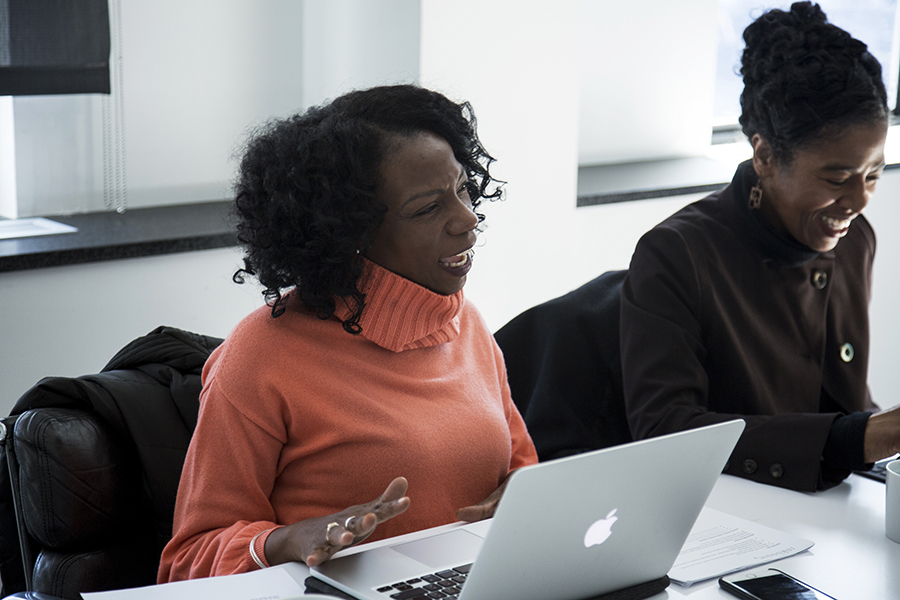
Carolle Nau and Bridgette Wallace / Photo courtesy of Sasaki
To transform the house from a decaying structure into a vibrant living and learning environment, the duo teamed up with Watertown-based design firm Sasaki. Christine Dunn and Katia Lucic, principals with Sasaki, are working on interior and exterior designs for the [G]Code House.
“We are really trying to restore the house to its old look while modernizing the appliances, electrical systems, and plumbing,” Lucic says.
The house, built in 1900, has five fireplaces, period woodwork, and about 5,000 square feet of living space.
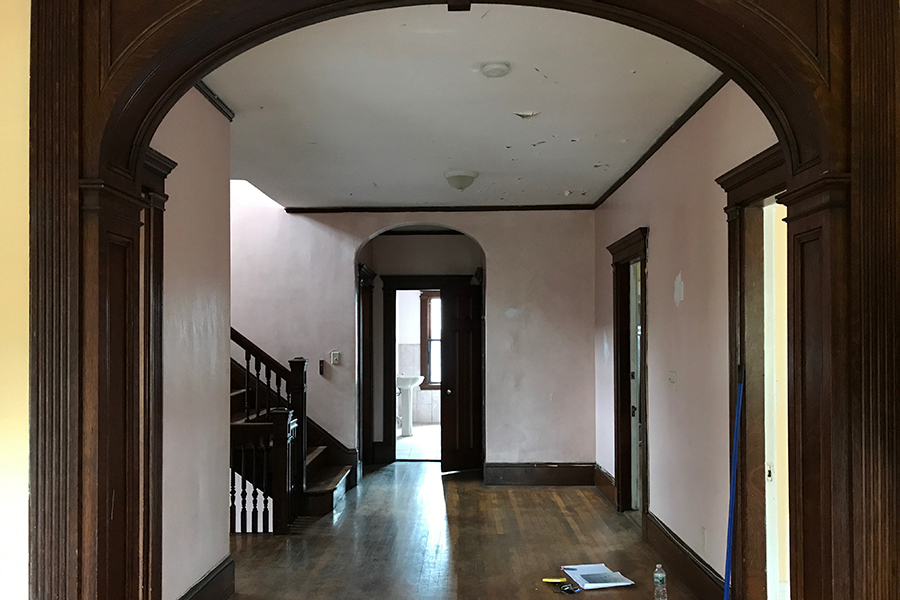
A current look at the [G]Code House’s interior / Photo courtesy of Sasaki
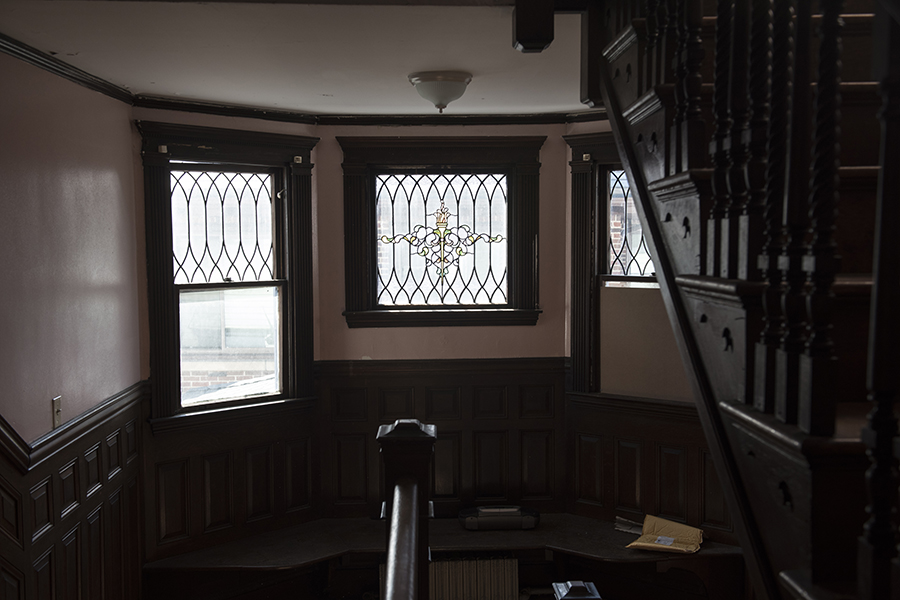
A current look at the [G]Code House’s interior / Photo courtesy of Sasaki
Dunn and Lucic plan to expand this main staircase to enlarge the first-floor kitchen. They’ll also create a communal open-concept work and study area. The lower level will become a media lab for classes, and upstairs, the selected 14 women will share six bedrooms, plus private bathrooms, separate rooms with showers, laundry rooms, and study nooks.
There’s also a carriage house on the property that will serve as a meeting space for lectures, lessons, and community meetings. Beyond it, an outdoor herb garden, seating area, and wooden fences with vegetation screens will be installed.
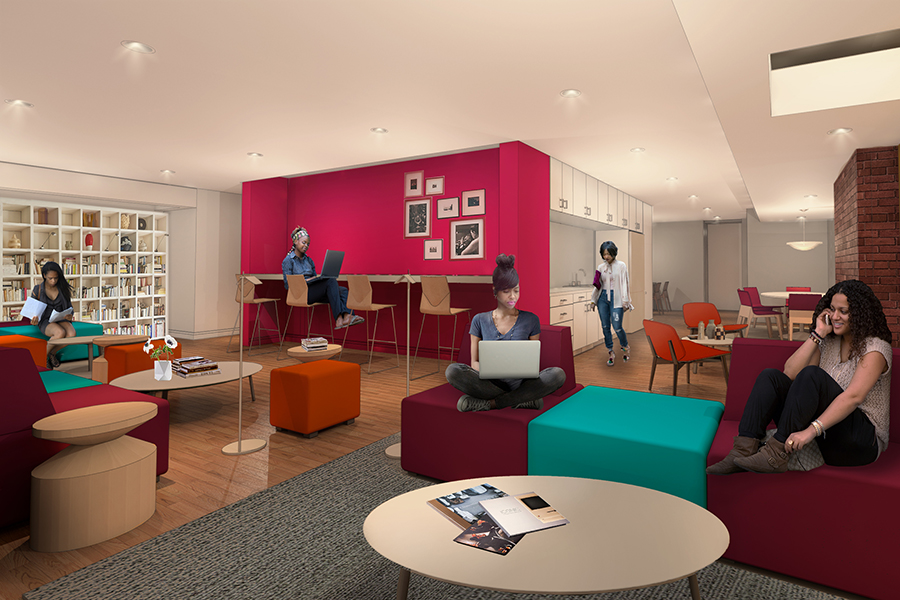
A rendering of the basement media lab / Image courtesy of Sasaki

A rendering of the carriage house / Image courtesy of Sasaki
Transforming the house into a resource for young women in the community is a type of adaptive reuse, Wallace explains, that will help combat the gentrification altering the fabric of Roxbury.
“We’ve seen rent just skyrocket,” Wallace says, adding that families who have lived in the neighborhood for generations are being pushed out.
Wallace and Nau bought the home from a developer who scooped it up after a foreclosure. They hope remaking the house into a community resource—rather than letting it fall prey to another developer—will work to fight the city’s affordable housing crisis.
“We could easily have rented out this property and contributed to the gentrification that is taking place so rapidly in our community by just having it be a regular rental property,” Wallace says.
Instead, she asks, “Can people in their community look at their properties as not just cash cows but something that can be useful and resourceful?”
The [G]Code program is currently seeking partnerships with local institutions and industries to build a sponsorship model, hopefully allowing for first-year residents to live at the house rent-free. Women are permitted to stay for several years, but will be required to pay rent after their first year as they enter the job market. Move-ins will start next year as more details about the program are finalized.
Wallace hopes by tapping into community resources, the adaptive reuse of the [G]Code House will not only do its part in the housing market, but bring value in the form of people, resources, and relationships.
“We’re excited about the opportunity that this can afford young women and we’re excited about connecting them to the burgeoning tech community that Boston has,” Wallace says. “[It’s] how we begin to tear down those walls and build bridges.”
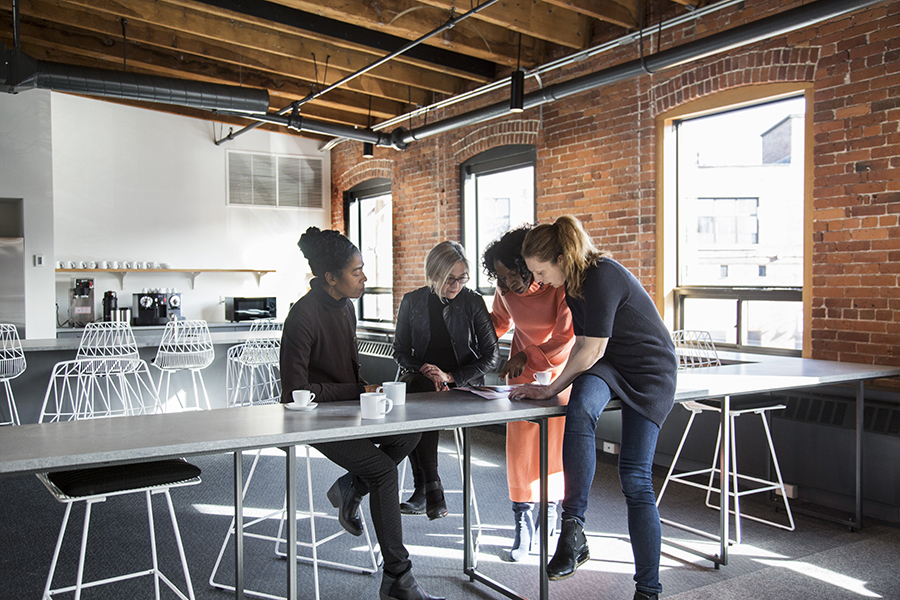
Bridgette, Christine, Carolle, and Katia gather in Sasaki’s new incubator space. / Photo courtesy of Sasaki
